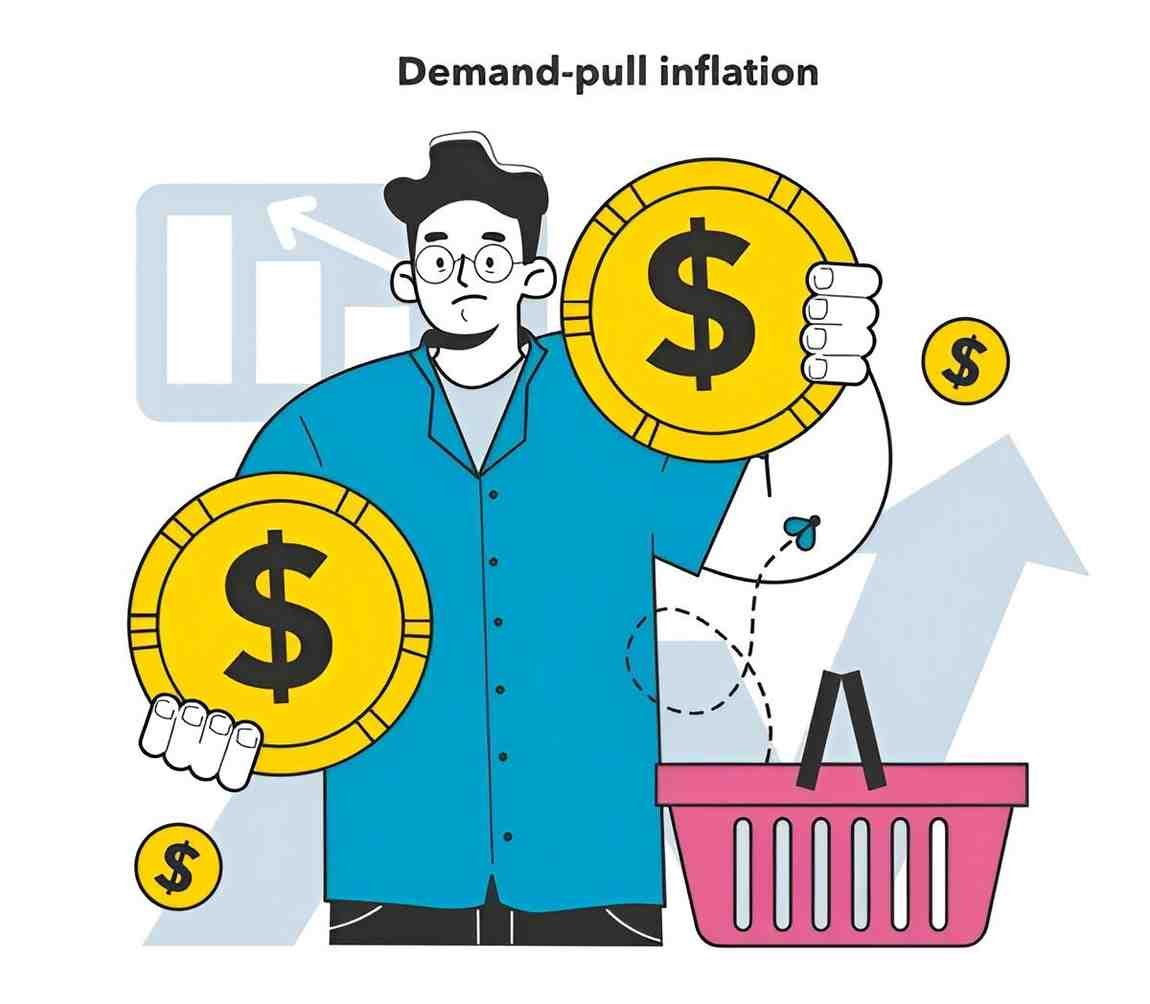Demand-pull inflation occurs when the overall demand for goods and services in an economy outpaces its aggregate supply. This phenomenon leads to a general rise in the price level across various sectors, driven primarily by consumer demand.
Table of Contents
Key Aspects of Demand-Pull Inflation
- Causes: It is typically caused by an increase in consumer spending, government expenditure, investment, or exports that exceeds the economy’s current production capacity.
- Effects: This inflationary pressure can result in rising prices, erosion of purchasing power, and economic imbalances if left unchecked.
- Control: Central banks often use monetary policy tools like interest rates to mitigate demand-pull inflation.
Mechanisms and Examples
Mechanisms of Demand-Pull Inflation
- Increased Demand: Higher consumer confidence or government spending can boost demand beyond the economy’s ability to produce goods and services.
- Supply Constraints: Limited production capacities or external shocks can exacerbate inflationary pressures when demand surges.
Example of Demand-Pull Inflation
Housing Market Boom
- Example: In a housing market boom, low mortgage rates and optimistic consumer sentiment may drive increased demand for homes. Builders may struggle to keep pace with demand due to limited construction capacity, leading to higher home prices.
Impact on Economies
Economic Implications
- Price Increases: Prices rise across sectors as consumers compete for limited goods and services.
- Reduced Purchasing Power: Higher prices erode the purchasing power of consumers, impacting their standard of living.
Policy Responses
Monetary Policy
- Interest Rates: Central banks may raise interest rates to curb borrowing and spending, reducing overall demand.
Fiscal Measures
- Government Spending: Controlling government expenditure can help manage demand pressures.
Challenges and Considerations
Economic Stability
- Balancing Growth: Managing inflation while fostering economic growth requires careful policy calibration.
Global Factors
- External Shocks: International events or supply disruptions can exacerbate demand-pull inflationary pressures.
Conclusion
Demand-pull inflation reflects a situation where increased consumer spending, government expenditures, or investment exceeds current production capabilities, driving up prices across the economy. This phenomenon underscores the delicate balance between stimulating economic growth and maintaining price stability. By employing effective monetary and fiscal policies, governments and central banks can mitigate the adverse effects of demand-pull inflation, promoting sustainable economic development and stability. Understanding these dynamics helps stakeholders navigate economic fluctuations and make informed decisions amidst evolving market conditions.





